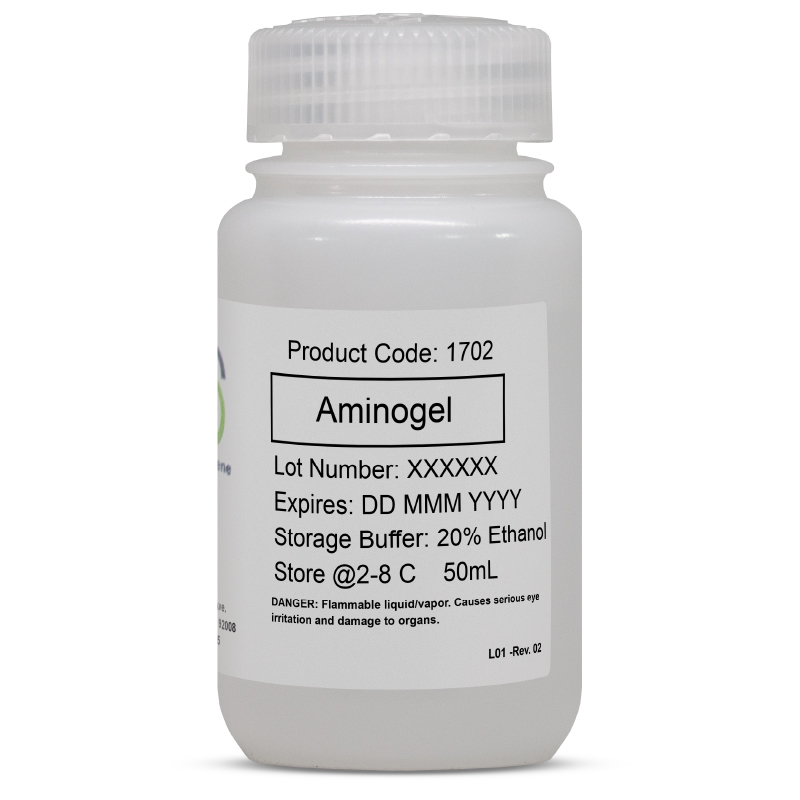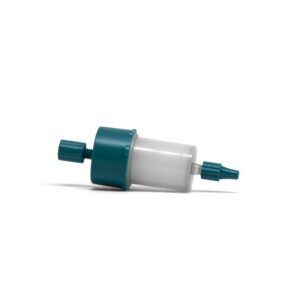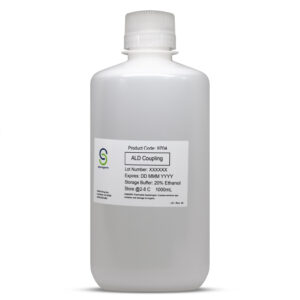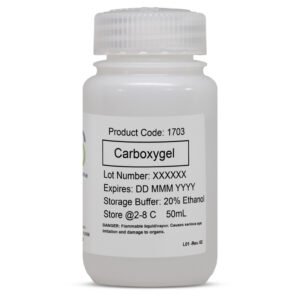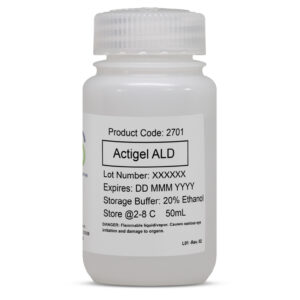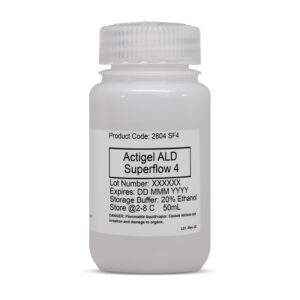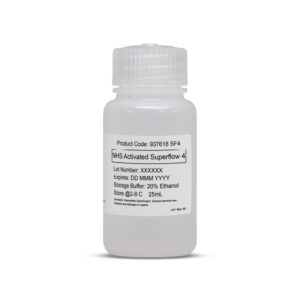Table 1. Resin Characteristics
| Active Group Density | 37.5 µmole/ml |
| Bead Material
| Agarose |
| Bead Percentage
| 4% |
| Bead Size | 60-160 µm |
| Flow Rate1 | >20 mL/min (>680 cm/hr) @ 25oC |
| pH Stability2 | 2-14 |
| Storage Temperature | 2-8 C |
| Storage Buffer
| 20% Ethanol |
| Form | Slurry |
| Chemical Stability2 | Stable in all commonly used aqueous solutions and buffers. |
| Physical Stability2 | Negligible volume variation due to changes in pH or ionic strength. |
1Linear flow rate = volumetric flow rate (cm3/h)/column cross-sectional area (cm2)
2Data refer to the coupled product, provided that the ligand can withstand the pH or chemical environment. Please note the following: pH stability, long term refers to the pH interval where the medium is stable over a long period of time without adverse effects on its subsequent chromatographic performance. pH stability, short term refers to the pH interval for regeneration and cleaning procedures.
Instructions for Use
Product Code: 1702 Aminogel
These resins bind ligands by carbodiimide chemistry, where a carboxyl group is activated by the diimide and can then efficiently combine with a primary amine. 1-Ethyl-3-(-dimethylaminopropyl) carbodiimide (EDC) is the carbodiimide of choice, because the resulting urea by-product is water soluble and straightforward to remove. The only difference, when using these two resins, is the location of the carboxyl group. The reactive group on the resin is tethered to the bead by a hydrophilic spacer arm to reduce steric effects when the conjugated molecule is bound by a large protein or other biomolecule.
Aminogel: Matrix—–NH2 + HOOC—-Ligand ————-> Matrix—–NHOC—-Ligand
Carboxygel: Matrix—–COOH + H2N—-Ligand ————-> Matrix—–COHN—-Ligand
Covalent immobilization of amine or carboxyl – containing molecules by EDC chemistry is often coupled with the addition of N-hydroxysuccinamide (NHS). EDC facilitates NHS binding to carboxyls forming a more stable intermediate, an NHS ester. The NHS ester affords a higher coupling efficiency and NHS activated molecules are also available commercially. Details of the two-step coupling have been widely published (see Hermanson, GT Bioconjugate Techniques 2nd Ed. Associated Press, London, UK 2008).
Note: Proteins contain numerous carboxyl and primary amine groups. Use of this chemistry can lead to or small molecules to the resin, where the number of reactive groups can be controlled.
Sanitizing the resin
Prior to coupling, the resin can be treated with 8M urea, 6M guanidine hydrochloride, or 70% ethanol to eliminate possible contamination. Care must be taken to exhaustively wash the resin after sanitizing to keep the reagents from interfering with the coupling process. However, the resin is supplied in 20% ethanol, so the product should be sterile when received. Coupled resin can be stored in nearly any buffer that is compatible with the ligand, since the resin is stable between pH 2 and 14. Storage buffers should contain 5mM EDTA and a preservative, such as 0.02% sodium azide (NaN3).
Immobilization
1. Remove storage buffer by suction on a sintered glass or small pore grid filter. Measure the volume of gel.
2. Wash the resin with 10 bed volumes (BV) of 0.2M NaCl
3. Dissolve the ligand in a pH 4.5 buffer. For small organic ligands, solubilization may require DMSO, acetone, or dioxane and this solution can be added to aqueous pH 4.5 buffer.
4. EDC should be used at 10mg / mL of gel and should be dissolved in minimal volume of deionized (DI) water. Other carbodiimides may require organic solvents and may require a different quantity for the reaction.
Carboxygel and Aminogel
5. Combine the ligand and carbodiimide solutions with the resin. Allow to incubate overnight at room temperature providing the ligand is stable under these conditions. The pH can be raised, if necessary, to 6.5 and the amide bond will still be generated. However, an assay to determine conjugation efficiency is recommended.
6. Wash with >10 BV of DI water to remove unbound ligand, urea reaction product, and excess carbodiimide. Note: urea products from carbodiimides other than EDC may be difficult to remove, and care should be taken to ensure any organic solvents and the carbodiimide are completely removed. Often a prewash with 5 BV of the organic solvents in DI water will aid in the removal of the organics.
7. Free reactive groups on the resin can be quenched with 1 BV of 0.1M ethanolamine (Carboxygel) or 1% acetic acid (Aminogel) for two hours at room temperature.
8. Wash resin with 10 BV DI water and store in buffer compatible with the ligand. After use, the column can be sanitized with the buffers described above, providing that they are not harmful to the ligand. Storage should be in a 70% v/v slurry of resin in buffer. 5mM EDTA and 0.02% sodium azide are recommended additives.
Note: Never let a hydrated agarose bead drop below 0°C during storage because freezing has the effect of damaging the agarose structure causing the beads to fracture. This damage makes the resin unusable and it should be discarded.
To Download Instructions for use:
INST 1702,1703 Aminogel, Carboxygel
